Read about Private Zaccheus Roberts, one of 11 Revolutionary War vets buried in Oak Ridge
Dennis Eggert brings us up to date on his continuing research into the history of the Roberts family. He and Ralph Martin have done a good job of researching the Roberts family history. Enjoy Dennis Eggert’s latest research into this Revolutionary War veteran buried in Oak Ridge.
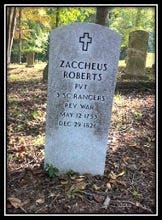
***
Much of the knowledge of Zaccheus Roberts’ life has already been thoroughly documented thanks to the works of local historian Snyder Roberts (now deceased), and many other knowledgeable Roberts’ family descendents. It is through their diligent research that I began my journey to discover Zaccheus Roberts’ unique story of becoming one of 11 known Revolutionary War veterans buried within Oak Ridge.
Initially, I was unsure as to where he is actually buried. Knowledgeable Roberts descendants disagree as to his actual burial site. They document three potential sites, two within the Oak Ridge city limits and one outside.
Additionally, Zaccheus Roberts has two separate tombstones marking where he is thought to be buried. One is in the Roberts Cemetery, also known as the Merrywater Homepark Cemetery, located off Bendamere Drive in Lawnville. Another tombstone is in the Roberts Cemetery located in The Preserve at the Clinch River subdivision within the Kennedy Bend of the Clinch River.
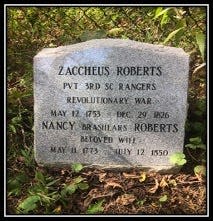
The third cemetery where Zaccheus Roberts was thought to be buried is in the Elias Roberts Cemetery located on the other side of the Clinch River.
From diligent family research, we know that brothers Zaccheus and Elias were born in Brownsville, Pennsylvania (1753 and 1760). Later, when the Revolutionary War erupted, the two brothers enlisted to fight the British and went their separate ways. Elias remained in the North and joined the Continental Rangers and fought at the Battles of Monmouth and Brandywine. Later his unit was ordered to the Southern campaign and he served at the ill-fated defense of Charleston, South Carolina.
Brother Zaccheus migrated to South Carolina, where he served in the Third South Carolina Rangers. He fought at the Battles of Fort Moultrie, Eutaw Springs, and Hanging Rock.
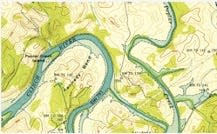
Immediately after the war, Zaccheus and Elias reunited in the Pendleton District of South Carolina. Here they met two sisters, Nancy and Rebecca Brashears, whom they would ultimately marry. Robert Samuel Brashears, father of Rebecca and Nancy, became the patriarch of this extended family. In 1794, they migrated to what would later become Roane County, Tennessee.
Patriarch Samuel Brashears settled one ridge beyond the Clinch River in Sugar Grove Valley. Elias bought 500 acres of land along Poplar Creek just before it empties into the Clinch River. From Elias’ home, it was not uncommon for this family to see Native Americans canoeing up and down Poplar Creek. Just across the Clinch River and slightly down from the mouth of Poplar Creek, Zaccheus Roberts bought 50 acres of land.
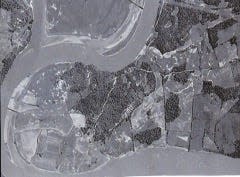
Here, the Roberts families raised their children. Elias and Rebecca had 10 children and Zaccheus and Nancy had eight that survived through childhood. These children and later generations of Roberts’ children would often go swimming on Elias Roberts’ property at a bend in Poplar Creek. They would spend many happy summer days jumping off “Granny’s Bluff” into the waters below.
Often, the Roberts brothers, along with local neighbor Hezekiah Love, would enjoy quality time together retelling their experiences while serving in South Carolina during the Revolutionary War. It was common knowledge among all of their neighbors that these three were Revolutionary War veterans. In later years, Zaccheus and Elias’ wives, Nancy and Rebecca, documented these treasured stories in Nancy’s military affidavits for her widow’s pension.
By 1802, Zaccheus was serving in the Roane County militia in Capt. Hugh France’s Company. In those days all able-bodied men on the county tax rolls were subject to be called up for temporary duty within a county militia company. This duty required them to perform additional services such as repairing roads and delivering mail. It is ironic that later that same year, Zaccheus sued Roane County for damages to his field due to a public road being built through his property. Ultimately, Zaccheus lost his case; the jury ruled that “Zaccheus Roberts hath received no damages inconsequence of the road.”
Later in December 1802, Zaccheus faced another legal issue when he assaulted Roane County Sheriff John Brown. The details of this assault are not known, but what is known is that Zaccheus inflicted “great damage” to this peace officer. In the end, it was Zaccheus Roberts who had to suffer; he had to pay the sheriff an expensive compensation, along with hefty court costs.
In 1806, at age 46, Elias Roberts died of unknown causes and was buried on his farm. His wife Rebecca then took ownership of the farm until her death in 1859 when she passed it down to her heirs.
Zaccheus lived another 20 years until his death on Dec. 29, 1826 - just three hours before daylight. He was buried on his family farm. The family did not place a marker on his grave, but instead erected a wooden shed over it. Overtime, the shed deteriorated and was replaced by a primitive marker. It is believed that his wife, Nancy, who died in 1850, is also buried there.
In 1834, the heirs of Zaccheus decided to sell the family farm and it was sold to local farmer, Annias McKinney. However, the land title had one stipulation: the family was to retain a small 30-foot square plot where Zaccheus Roberts was buried. Thanks to this land title, we know the location of his grave! Over the years, this small Zaccheus Roberts Cemetery was neglected, but not forgotten. Its location remained known and at some time a fence was erected around it.
The years passed. Thanks to Roberts family historians, connections to their roots remained intact. In 1944, local historian and Roberts descendent Snyder Roberts located the Zaccheus Roberts’ family Bible. At that time, it was in the possession of Mrs. H.M. Hedgecock, a Roberts descendent who was living in Kingston.
Sadly, the genealogy pages to this Bible were in a severely decrepit condition. Snyder pleaded with Mrs. Hedgecock to donate this priceless treasure to the Tennessee State Archives, which she did in 1945. This Bible then became the property of the state of Tennessee. Today, the genealogy pages of the Zaccheus Roberts Bible can be accessed by everyone via the internet through the Tennessee State Archives, Family Bibles.
In 1942, this land that was once owned by Zaccheus Roberts changed forever. The advent of World War II and the need to condemn land for the effort to develop the atomic bomb isolated Kennedy Bend.
Although Kennedy Bend was not included within the security area of the Manhattan Project, it was still under federal ownership. One local Lawnville resident - whose family roots go back generations - informed me that the government then planted pine trees. This transformed the fertile farmland into an arboreal landscape that provided cover and obstructed the view across the river. The Roberts Cemetery became lost within a forest of pines.
After WWII, Kennedy Bend went through another transformation. After federal ownership of this area ended, local residents began visiting Kennedy Bend again. The roads in the bend in the early 1970s were still in good condition, which made for easy access. Residents would drive their family cars there to enjoy outings and family picnics, and especially to reconnect to their departed loved ones buried in family cemeteries.
Then in 1987, Kennedy Bend was sold to the Boeing Company. Boeing’s plans for development there did not materialize and in 2001, they sold Kennedy Bend to the developers of Rarity Ridge. Then in 2003, the city of Oak Ridge extended its borders across the Clinch River to annex Kennedy Bend.
However, the recession beginning in 2007 had a devastating effect on the Rarity Ridge development and ultimately it went into bankruptcy. After the collapse of Rarity Ridge, a planned neighborhood development was implemented in 2017. Homes are again being constructed in what is now called The Preserve on the Clinch River.
Today, this successful effort is transforming Kennedy Bend, now Campbell Bend, into a vibrant residential community. Yet, located away from the booming construction, neglected, primitive roads still exist that are only accessible by rugged off-road vehicles.
Here, visitors can see remnants of old stone walls and forgotten cemeteries. Using their smart phones, they can access a map with a GPS marker indicating the location of the Roberts Cemetery.
Abandoning their vehicles they must follow this signal deeper into the backwoods until they stumble upon the gravesite of Private Zaccheus Roberts. Here, lying in silent repose is one of only two Revolutionary War veterans whose graves are each documented as being in separate Oak Ridge historic cemeteries.
***
Thank you, Dennis, for this excellent detail of Zaccheus Roberts history, as well as the area of Oak Ridge just west of the Clinch River.
D. Ray Smith is the historian for the city of Oak Ridge. His "Historically Speaking" columns appear weekly in The Oak Ridger.
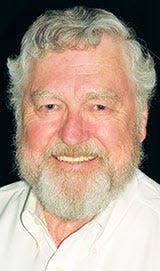
This article originally appeared on Oakridger: Zaccheus Roberts, one of 11 Revolutionary War vets buried in Oak Ridge
